The Dark Web… sounds scary, doesn’t it?
And what is it? Like that Experian commercial you see on TV that promotes “free Dark Web scans” – WHAT ARE THEY TALKING ABOUT?
Where is the Dark Web?
Well, there are basically 3 parts to the world wide web:
- The Surface Web is everything that’s publicly available and accessible through search engines or typing a URL into your browser.
- The Deep Web is all the content on the web that is not indexed by standard search engines, such as email clients and online banking websites.
- The Dark Web refers to heavily-encrypted sites that cannot be accessed with your average, run-of-the-mill browser. As a result, these sites are often used as a black market, and as a source for hacked data. They can have a number of other purposes as well, but, without the right software, you may never know they exist.
The anonymity of the Dark Web
The main characteristic of the Dark Web is its anonymity. It’s widely used as an instrument for illegal activities as a result. These activities include child pornography, drug dealing, firearm sales, and trading stolen credit card numbers.
The most famous example of illegal Dark Web activity was Silk Road, which used a combination of Bitcoins and the Dark Web to exchange drugs internationally. Law enforcement agencies took down the online marketplace in 2013 and arrested its alleged founder — and again, in 2014.
All the common dangers of a traditional black market exist on the Dark Web. However, there are also some unofficial dangers to be a wary of. Many of those who operate in the Dark Web have no problem exploiting you in any way they can — and since many of them are hackers or at least know how to use hacking tools, they can be dangerous.
As a result, there are many tales of blackmail peppering the Dark Web, from people who are somehow identified there, or tricked into giving their information. Downloads also tend to be even more suspect in the dark corners of the internet, so your computer may be in danger as well.
10 most common pieces of information on the Dark Web
Speaking of Experian, they compiled a list of the 10 most common pieces of information sold on the Dark Web and the general range of what they sell for:
- Social Security number: $1
- Credit or debit card: $5-$110
- Online payment services login info (e.g. Paypal): $20-$200
- Loyalty accounts: $20
- Subscription services: $1-$10
- Diplomas: $100-$400
- Driver’s license: $20
- Passports (US): $1000-$2000
- Medical records: $1-$1000
- General non-Financial Institution logins: $1
Frightening, isn’t it? A bit overwhelming? Well, it’s important to be aware of what is going on so you can protect yourself.
What Dark Web threats can do with Social Security numbers and medical records
And you have to ask yourself what these things are worth to you. Especially your Social Security number and medical records. If there is a breach, hackers can potentially blackmail you for a lifetime. If your medical record contains sensitive protected health information (PHI) such as cancer diagnoses, sexually transmitted diseases, or psychological conditions, you could be subject to public embarrassment or political assassination. During the 2016 election, fake electronic health records for Democratic candidate Hillary Clinton were publicized that raised questions about her health and may have contributed to her loss.
Protecting yourself from the Dark Web
There are several measures you can take to protect your own personal information such as:
- Maintaining healthy password practices
- Not sharing your personal information unless it’s necessary
- Utilizing two-factor authentication
- Making sure that you keep your antivirus software and software updated on all devices (computer, laptop, tablet, phone) current.







